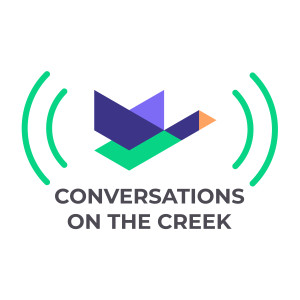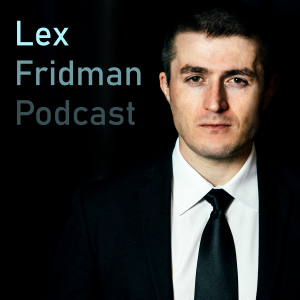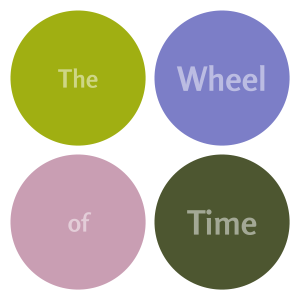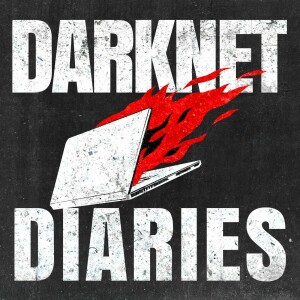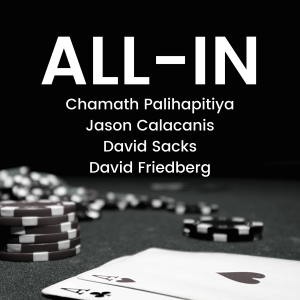

Latent Space: The AI Engineer Podcast
https://rss.flightcast.com/vgnxzgiwwzwke85ym53fjnzu.xmlEpisode List

The RLVR Revolution — with Nathan Lambert (AI2, Interconnects.ai)
Chapters00:00:00 Welcome and Guest Introduction00:01:18 Tulu, OVR, and the RLVR Journey00:03:40 Industry Approaches to Post-Training and Preference Data00:06:08 Understanding RLVR and Its Impact00:06:18 Agents, Tool Use, and Training Environments00:10:34 Open Data, Human Feedback, and Benchmarking00:12:44 Chatbot Arena, Sycophancy, and Evaluation Platforms00:15:42 RLHF vs RLVR: Books, Algorithms, and Future Directions00:17:54 Frontier Models: Reasoning, Hybrid Models, and Data00:22:11 Search, Retrieval, and Emerging Model Capabilities00:29:23 Tool Use, Curriculum, and Model Training Challenges00:38:06 Skills, Planning, and Abstraction in Agent Models00:46:50 Parallelism, Verifiers, and Scaling Approaches00:54:33 Overoptimization and Reward Design in RL01:02:27 Open Models, Personalization, and the Model Spec01:06:50 Open Model Ecosystem and Infrastructure01:13:05 Meta, Hardware, and the Future of AI Competition01:15:42 Building an Open DeepSeek and Closing ThoughtsWe first had Nathan on to give us his RLHF deep dive when he was joining AI2, and now he’s back to help us catch up on the evolution to RLVR (Reinforcement Learning with Verifiable Rewards), first proposed in his Tulu 3 paper. While RLHF remains foundational, RLVR has emerged as a powerful approach for training models on tasks with clear success criteria and using verifiable, objective functions as reward signals—particularly useful in domains like math, code correctness, and instruction-following. Instead of relying solely on subjective human feedback, RLVR leverages deterministic signals to guide optimization, making it more scalable and potentially more reliable across many domains. However, he notes that RLVR is still rapidly evolving, especially regarding how it handles tool use and multi-step reasoning.We also discussed the Tulu model series, a family of instruction-tuned open models developed at AI2. Tulu is designed to be a reproducible, state-of-the-art post-training recipe for the open community. Unlike frontier labs like OpenAI or Anthropic, which rely on vast and often proprietary datasets, Tulu aims to distill and democratize best practices for instruction and preference tuning. We are impressed with how small eval suites, careful task selection, and transparent methodology can rival even the best proprietary models on specific benchmarks.One of the most fascinating threads is the challenge of incorporating tool use into RL frameworks. Lambert highlights that while you can prompt a model to use tools like search or code execution, getting the model to reliably learn when and how to use them through RL is much harder. This is compounded by the difficulty of designing reward functions that avoid overoptimization—where models learn to “game” the reward signal rather than solve the underlying task. This is particularly problematic in code generation, where models might reward hack unit tests by inserting pass statements instead of correct logic. As models become more agentic and are expected to plan, retrieve, and act across multiple tools, reward design becomes a critical bottleneck.Other topics covered:- The evolution from RLHF (Reinforcement Learning from Human Feedback) to RLVR (Reinforcement Learning from Verifiable Rewards)- The goals and technical architecture of the Tulu models, including the motivation to open-source post-training recipes- Challenges of tool use in RL: verifiability, reward design, and scaling across domains- Evaluation frameworks and the role of platforms like Chatbot Arena and emerging “arena”-style benchmarks- The strategic tension between hybrid reasoning models and unified reasoning models at the frontier- Planning, abstraction, and calibration in reasoning agents and why these concepts matter- The future of open-source AI models, including DeepSeek, OLMo, and the potential for an “American DeepSeek”- The importance of model personality, character tuning, and the model spec paradigm- Overoptimization in RL settings and how it manifests in different domains (control tasks, code, math)- Industry trends in inference-time scaling and model parallelismFinally, the episode closes with a vision for the future of open-source AI. Nathan has now written up his ambition to build an “American DeepSeek”—a fully open, end-to-end reasoning-capable model with transparent training data, tools, and infrastructure. He emphasizes that open-source AI is not just about weights; it’s about releasing recipes, evaluations, and methods that lower the barrier for everyone to build and understand cutting-edge systems. It would seem the

AI is Eating Search
ChatGPT handles 2.5B prompts/day and is on track to match Google's daily searches by end of 2026. AI agents don't browse like us—they crave queryable, chunkable data for tools like ChatGPT & Perplexity. A new industry is being born, some are calling it AI SEO, others GEO, but what is clear is that it drives amazing results. Businesses are seeing 2-4x higher conversion from visitors coming from AI compared to traditional search. Robert McCloy is the co-founder of Scrunch AI (https://scrunchai.com/), a fast growing company that helps brands and businesses re-write their content on the fly based on what agents are looking for.

Cline: the open source coding agent that doesn't cut costs
Saoud Rizwan and Pash from Cline joined us to talk about why fast apply models got bitter lesson'd, how they pioneered the plan + act paradigm for coding, and why non-technical people use IDEs to do marketing and generate slides.Full writeup: https://www.latent.space/p/clineX: https://x.com/latentspacepodChapters:00:00 - Introductions 01:35 - Plan and Act Paradigm 05:37 - Model Evaluation and Early Development of Cline 08:14 - Use Cases of Cline Beyond Coding 09:09 - Why Cline is a VS Code Extension and Not a Fork 12:07 - Economic Value of Programming Agents 16:07 - Early Adoption for MCPs 19:35 - Local vs Remote MCP Servers 22:10 - Anthropic's Role in MCP Registry 22:49 - Most Popular MCPs and Their Use Cases 25:26 - Challenges and Future of MCP Monetization 27:32 - Security and Trust Issues with MCPs 28:56 - Alternative History Without MCP 29:43 - Market Positioning of Coding Agents and IDE Integration Matrix 32:57 - Visibility and Autonomy in Coding Agents 35:21 - Evolving Definition of Complexity in Programming Tasks 38:16 - Forks of Cline and Open Source Regrets 40:07 - Simplicity vs Complexity in Agent Design 46:33 - How Fast Apply Got Bitter Lesson'd 49:12 - Cline's Business Model and Bring-Your-Own-API-Key Approach 54:18 - Integration with OpenRouter and Enterprise Infrastructure 55:32 - Impact of Declining Model Costs 57:48 - Background Agents and Multi-Agent Systems 1:00:42 - Vision and Multi-Modalities 1:01:07 - State of Context Engineering 1:07:37 - Memory Systems in Coding Agents 1:10:14 - Standardizing Rules Files Across Agent Tools 1:11:16 - Cline's Personality and Anthropomorphization 1:12:55 - Hiring at Cline and Team Culture

Personalized AI Language Education — with Andrew Hsu, Speak
Speak (https://speak.com) may not be very well known to native English speakers, but they have come from a slow start in 2016 to emerge as one of the favorite partners of OpenAI, with their Startup Fund leading and joining their Series B and C as one of the new AI-native unicorns, noting that “Speak has the potential to revolutionize not just language learning, but education broadly”. Today we speak with Speak’s CTO, Andrew Hsu, on the journey of building the “3rd generation” of language learning software (with Rosetta Stone being Gen 1, and Duolingo being Gen 2). Speak’s premise is that speech and language models can now do what was previously only possible with human tutors—provide fluent, responsive, and adaptive instruction—and this belief has shaped its product and company strategy since its early days. https://www.linkedin.com/in/adhsu/ https://speak.com One of the most interesting strategic decisions discussed in the episode is Speak’s early focus on South Korea. While counterintuitive for a San Francisco-based startup, the decision was influenced by a combination of market opportunity and founder proximity via a Korean first employee. South Korea’s intense demand for English fluency and a highly competitive education market made it a proving ground for a deeply AI-native product. By succeeding in a market saturated with human-based education solutions, Speak validated its model and built strong product-market fit before expanding to other Asian markets and eventually, globally. The arrival of Whisper and GPT-based LLMs in 2022 marked a turning point for Speak. Suddenly, capabilities that were once theoretical—real-time feedback, semantic understanding, conversational memory—became technically feasible. Speak didn’t pivot, but rather evolved into its second phase: from a supplemental practice tool to a full-featured language tutor. This transition required significant engineering work, including building custom ASR models, managing latency, and integrating real-time APIs for interactive lessons. It also unlocked the possibility of developing voice-first, immersive roleplay experiences and a roadmap to real-time conversational fluency. To scale globally and support many languages, Speak is investing heavily in AI-generated curriculum and content. Instead of manually scripting all lessons, they are building agents and pipelines that can scaffold curriculum, generate lesson content, and adapt pedagogically to the learner. This ties into one of Speak’s most ambitious goals: creating a knowledge graph that captures what a learner knows and can do in a target language, and then adapting the course path accordingly. This level-adjusting tutor model aims to personalize learning at scale and could eventually be applied beyond language learning to any educational domain. Finally, the conversation touches on the broader implications of AI-powered education and the slow real-world adoption of transformative AI technologies. Despite the capabilities of GPT-4 and others, most people’s daily lives haven’t changed dramatically. Speak sees itself as part of the generation of startups that will translate AI’s raw power into tangible consumer value. The company is also a testament to long-term conviction—founded in 2016, it weathered years of slow growth before AI caught up to its vision. Now, with over $50M ARR, a growing B2B arm, and plans to expand across languages and learning domains, Speak represents what AI-native education could look like in the next decade.

AI Video Is Eating The World — Olivia and Justine Moore, a16z
When the first video diffusion models started emerging, they were little more than just “moving pictures” - still frames extended a few seconds in either direction in time. There was a ton of excitement about OpenAI’s Sora on release through 2024, but so far only Sora-lite has been widely released. Meanwhile, other good videogen models like Genmo Mochi, Pika, MiniMax T2V, Tencent Hunyuan Video, and Kuaishou’s Kling have emerged, but the reigning king this year seems to be Google’s Veo 3, which for the first time has added native audio generation into their model capabilities, eliminating the need for a whole class of lipsynching tooling and SFX editing. The rise of Veo 3 unlocks a whole new category of AI Video creators that many of our audience may not have been exposed to, but is undeniably effective and important particularly in the “kids” and “brainrot” segments of the global consumer internet platforms like Tiktok, YouTube and Instagram. By far the best documentarians of these trends for laypeople are Olivia and Justine Moore, both partners at a16z, who not only collate the best examples from all over the web, but dabble in video creation themselves to put theory into practice. We’ve been thinking of dabbling in AI brainrot on a secondary channel for Latent Space, so we wanted to get the braindump from the Moore twins on how to make a Latent Space Brainrot channel. Jump on in!
Create Your Podcast In Minutes
- Full-featured podcast site
- Unlimited storage and bandwidth
- Comprehensive podcast stats
- Distribute to Apple Podcasts, Spotify, and more
- Make money with your podcast


